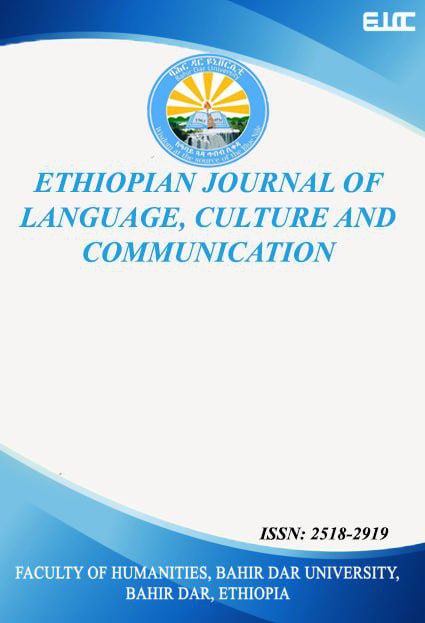Content analysis of the chronicle of Bäkaffa (r.1721-1730)
Abstract
Ethiopia is a unique among sub Saharan Africa in ancient tradition of written culture its own literary language, Gə’əz. Gə’əz is the primary literary language in Ethiopia. During the reign of Axum (from the 5th c., A.D onwards), religious literature has been translated from the Greek and Syriac into the Gə’əz. After the rise of the “Solomon dynasty†in the 13th century, religious and some secular texts were translated from Arabic into Gə’əz. Many local works (hagiographies, chronicles and the like) began to be written during this period. The writing of chronicles as historical genres of the Ethiopian Emperors began in the early 14th c., during the reign of Emperor Amdä Ṣəyon who ruled the country from 1314 to 1344. The chronicle of king Bäkaffa (r.1721-1730) is an important genre in Ethiopian historiography. Originally it was composed by Azzaž Sinoda and KÇnfä Michael in the first half of 18th century. The main objective of this research was to analysis the chronicle of Bäkaffa. The paper discusses the history of the king, and his Social, political, economic, Religious and cultural Contribution including his military expedition against rebellious provinces. The Content of the Chronicle, the Subject Matters (Social, political, economic, Religious and court) of the Chronicle, Language use in the chronicle, Inter-textuality, and some Amharic loanwords are also analyzed. At last it makes conclusion and recommendations.
Authors who publish with this journal agree to the following terms:
- Authors retain copyright and grant the journal right of first publication with the work simultaneously licensed under a Creative Commons Attribution License that allows others to share the work with an acknowledgement of the work's authorship and initial publication in this journal.
- Authors are able to enter into separate, additional contractual arrangements for the non-exclusive distribution of the journal's published version of the work (e.g., post it to an institutional repository or publish it in a book), with an acknowledgement of its initial publication in this journal.
- Authors are permitted and encouraged to post their work online (e.g., in institutional repositories or on their website) prior to and during the submission process, as it can lead to productive exchanges, as well as earlier and greater citation of published work (See The Effect of Open Access).


